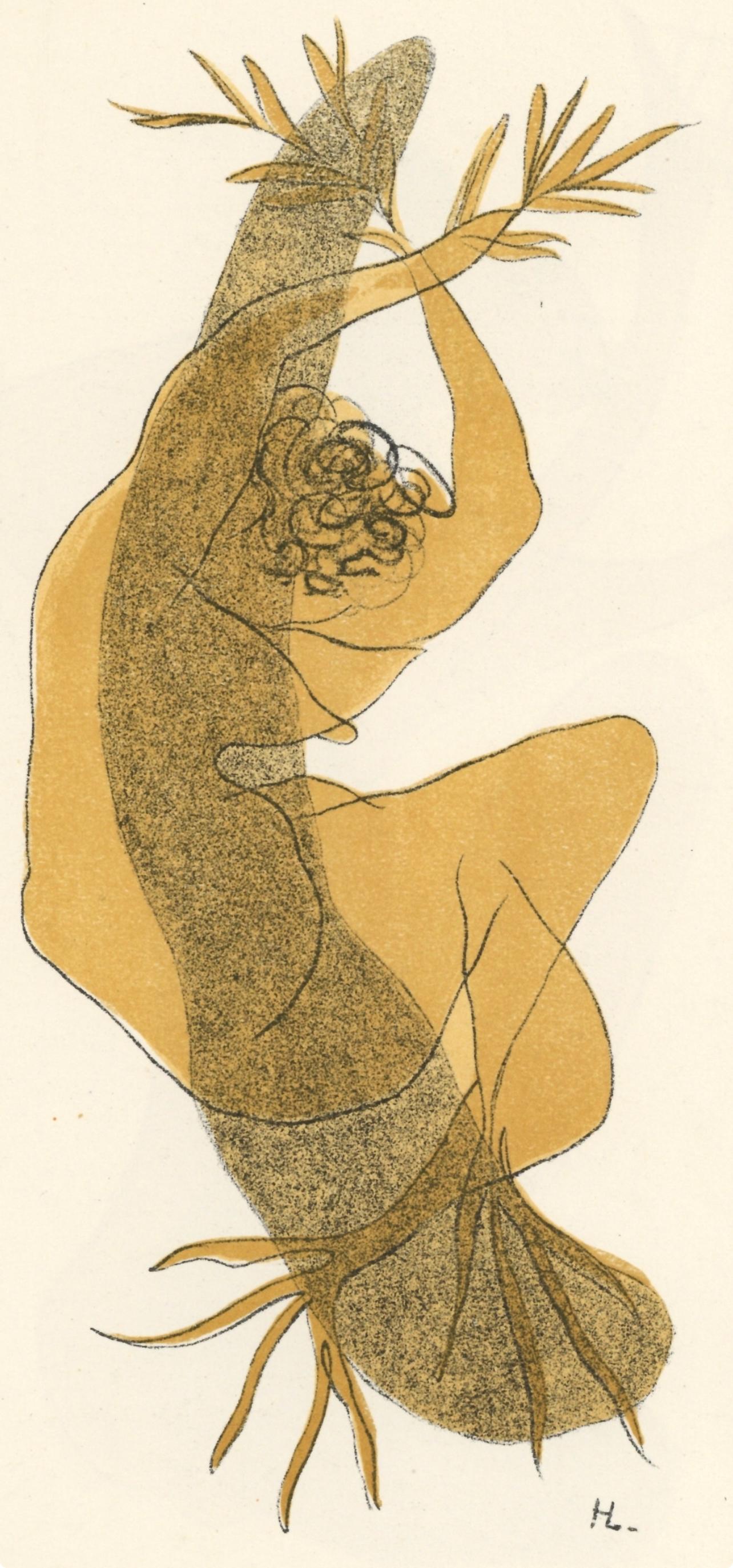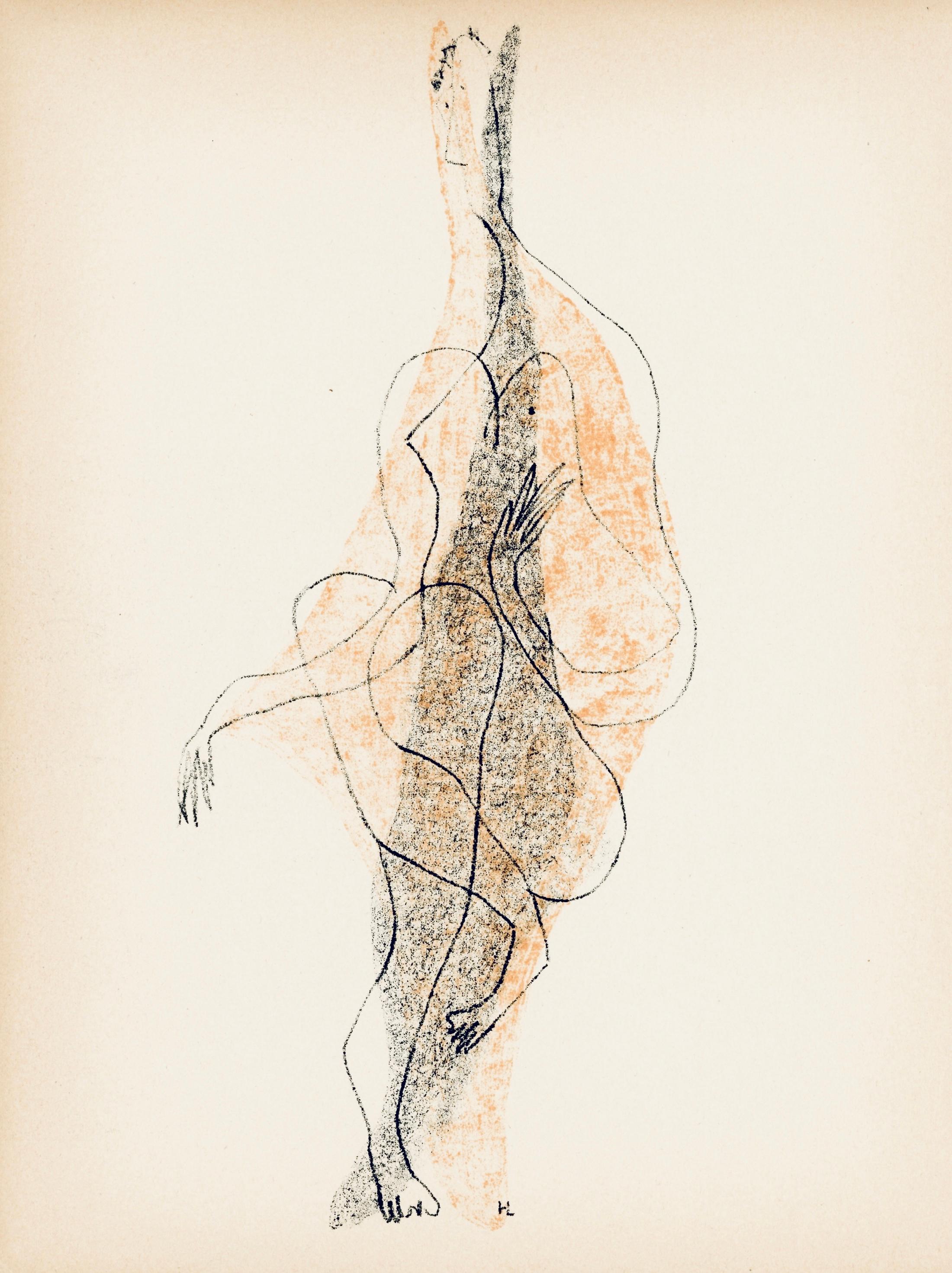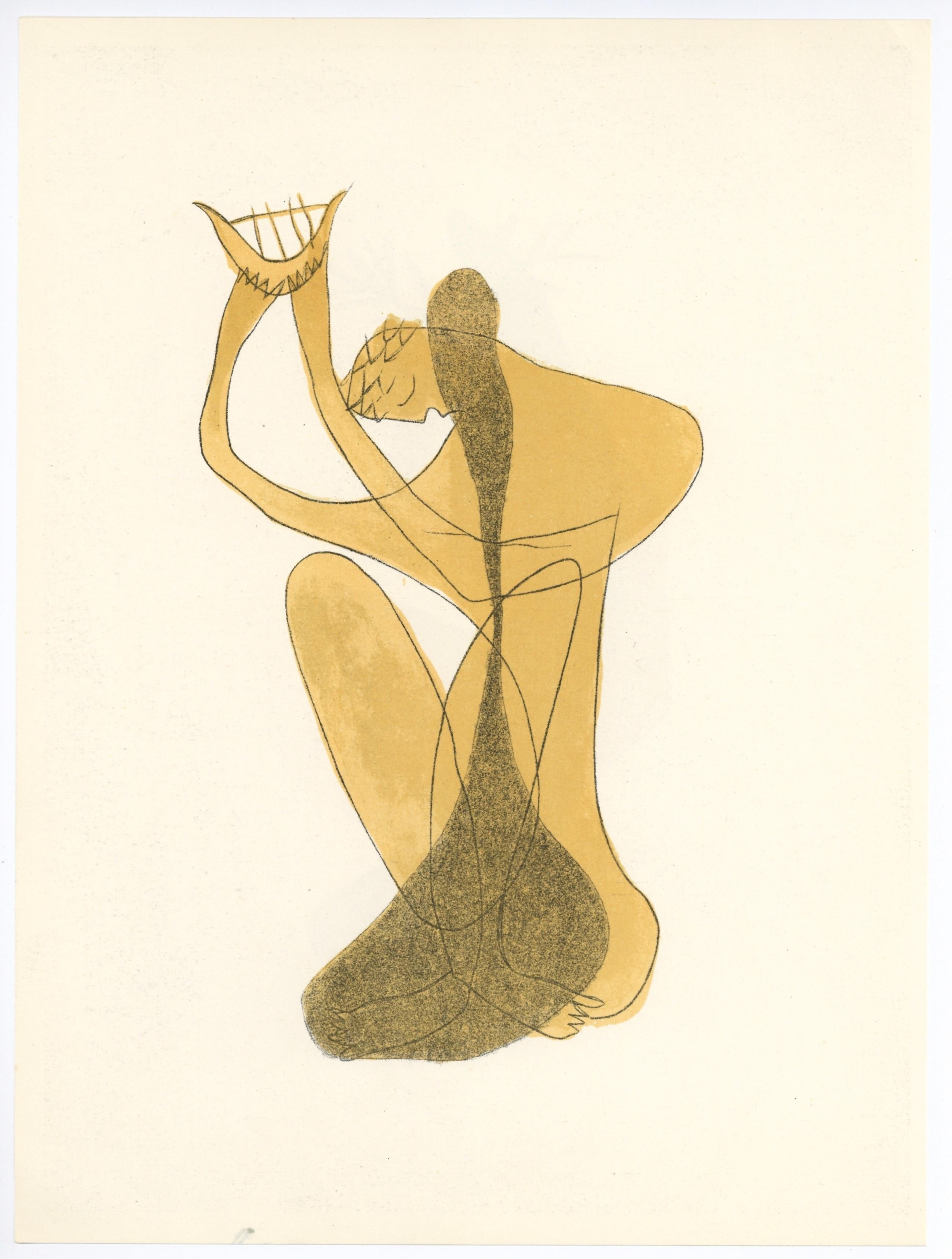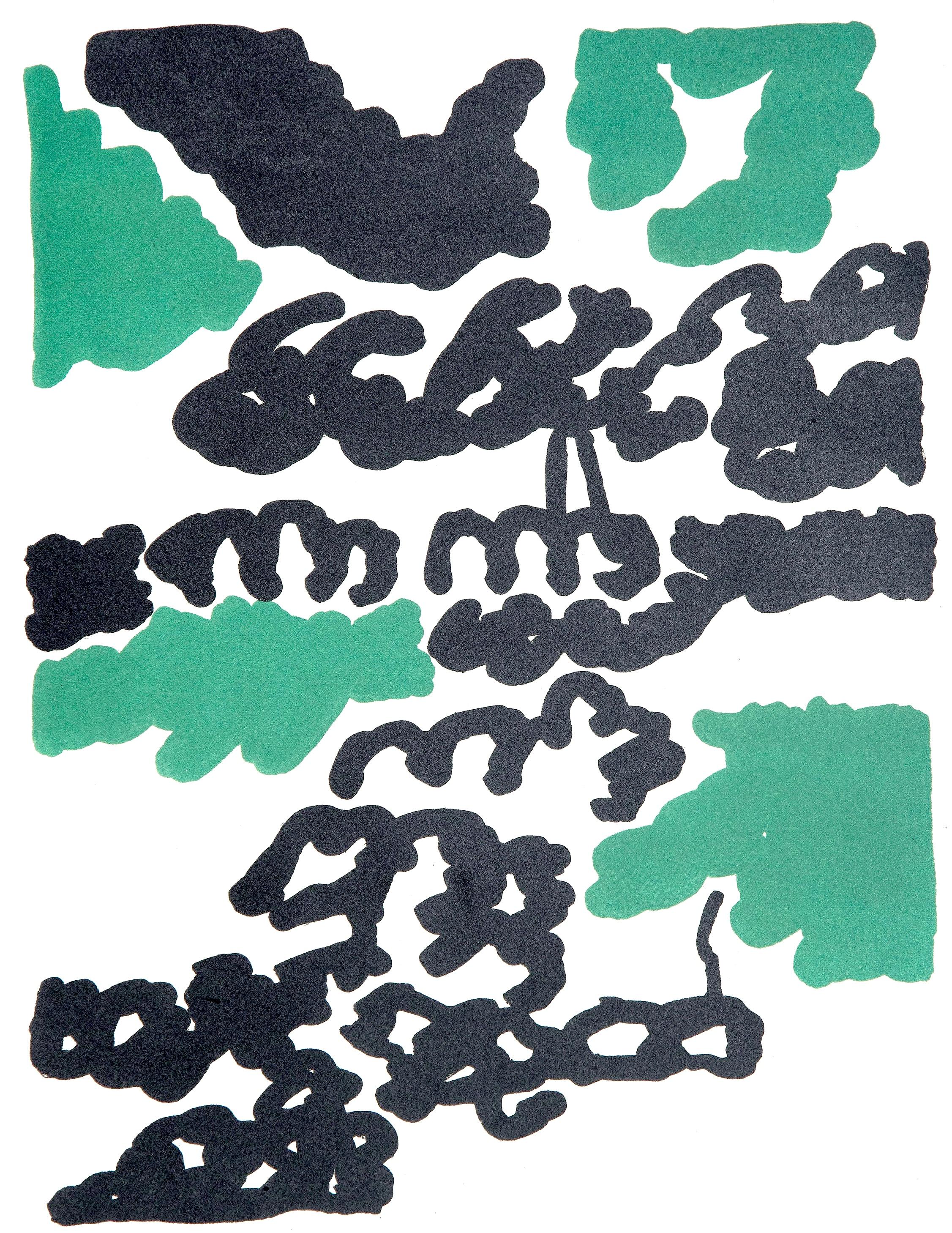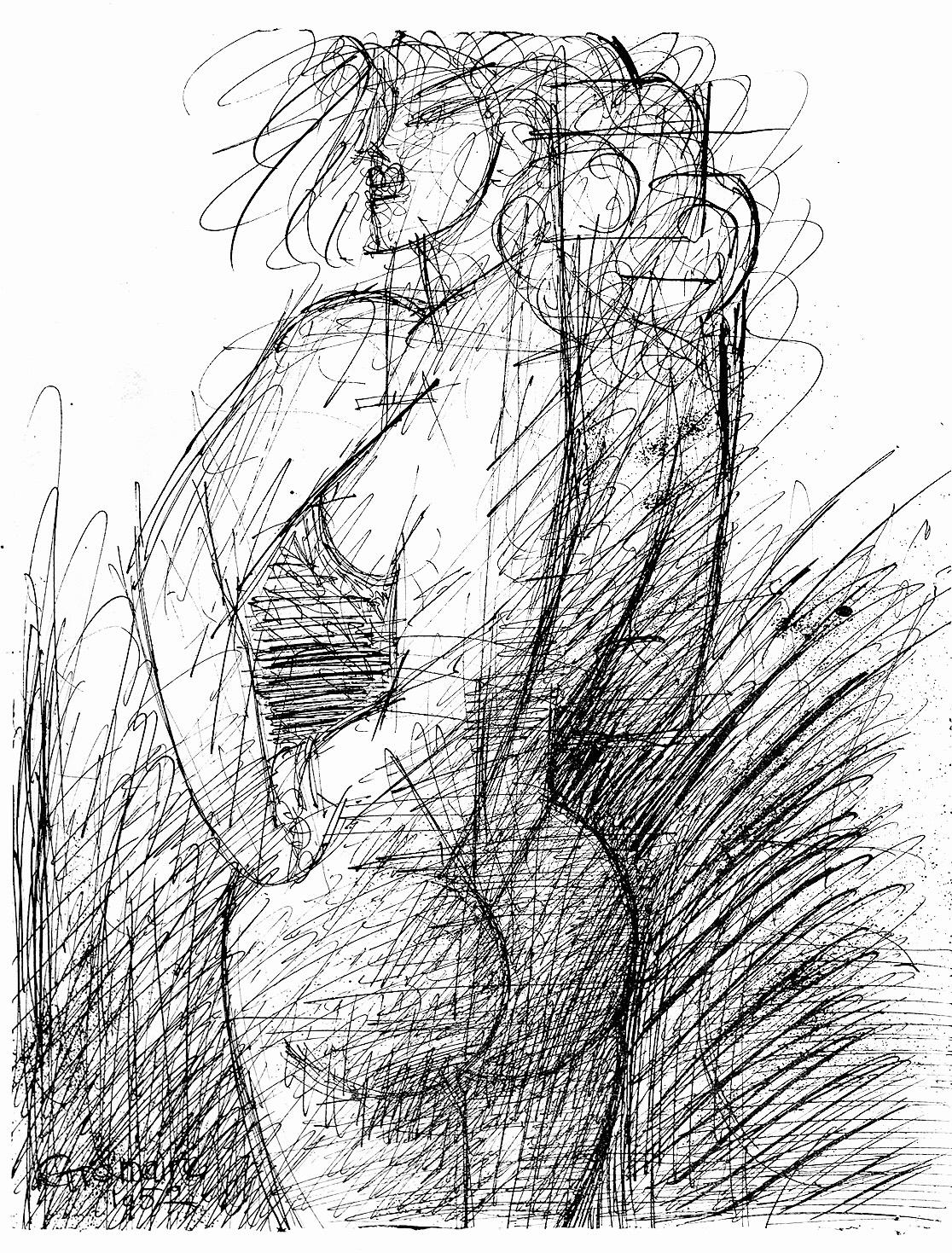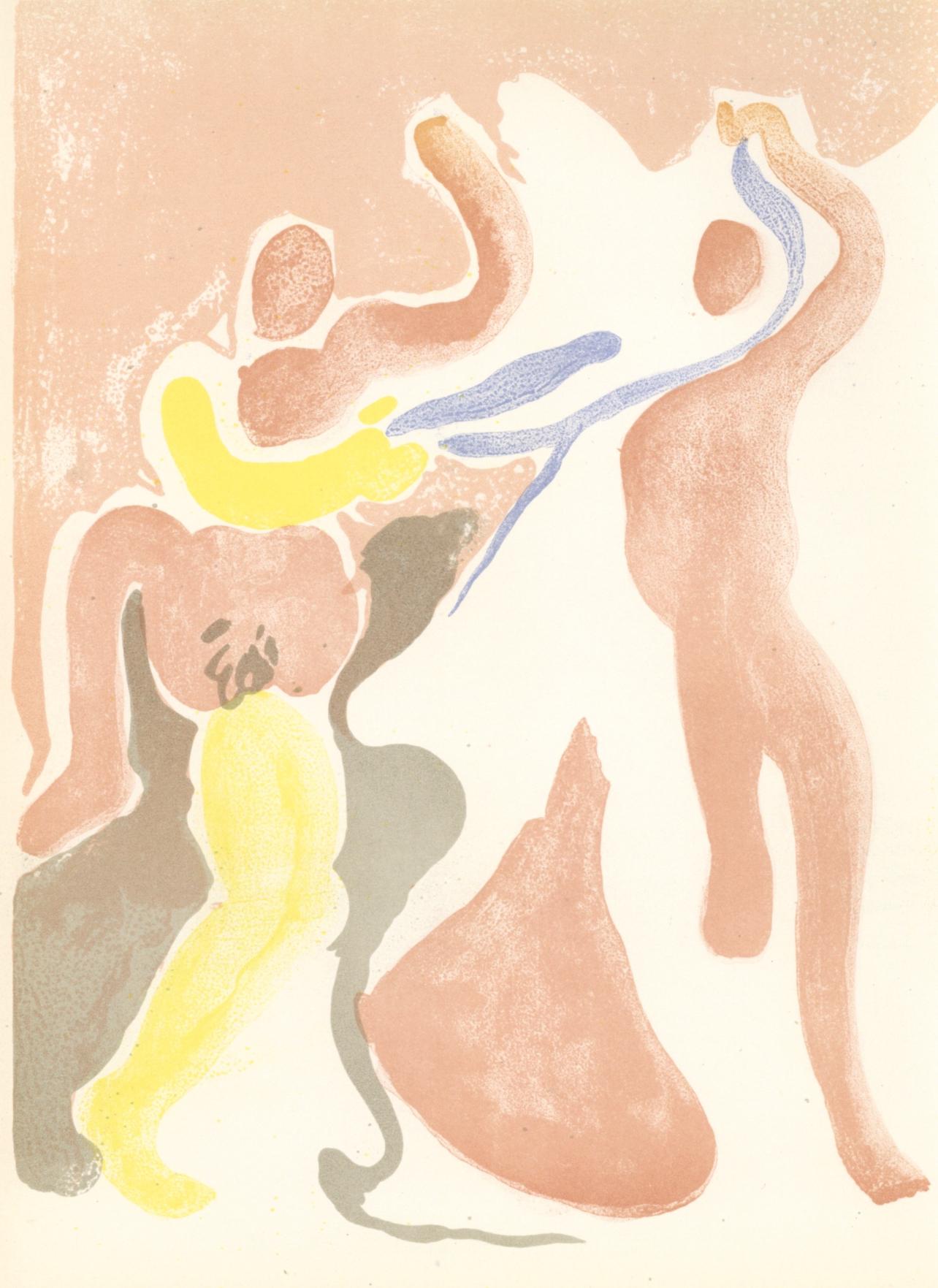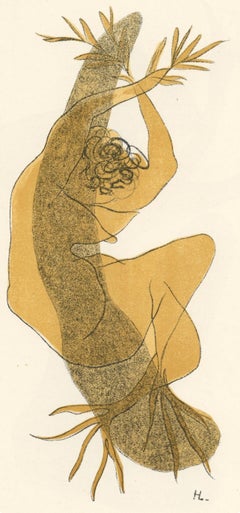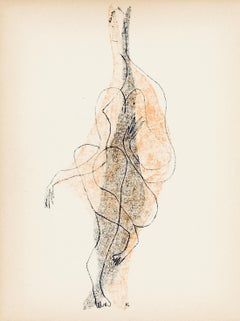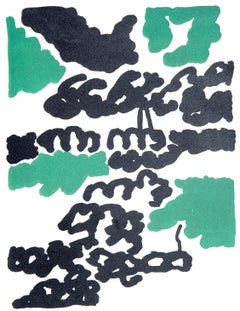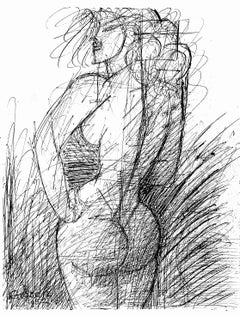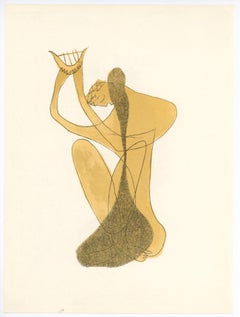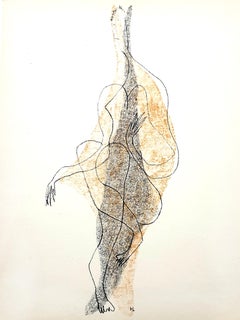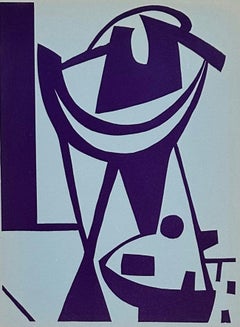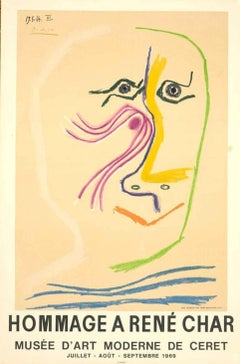This exquisite lithograph by Henri Laurens (1885–1954), titled Apollon (Apollo), from Verve, Revue Artistique et Litteraire, Vol. VII, No. 27–28, originates from the 1953 issue published by Editions de la revue Verve, Paris, under the direction of Teriade, Editeur, Paris, and printed by Mourlot Freres, Paris, 1953. This elegant and rhythmic composition embodies Laurens’s mastery of sculptural form translated into graphic art. Apollon captures the artist’s fascination with transformation, movement, and myth, reflecting his ability to merge the sensuality of organic shapes with the structured balance of Cubist geometry.
Executed as a lithograph on velin du Marais paper, this work measures 14 x 10.5 inches. Unsigned and unnumbered as issued. The edition exemplifies the refined craftsmanship of the Mourlot Freres atelier, celebrated for its collaborations with leading modern artists of the 20th century.
Artwork Details:
Artist: Henri Laurens (1885–1954)
Title: Apollon (Apollo), from Verve, Vol. VII, No. 27–28, 1953
Medium: Lithograph on velin du Marais paper
Dimensions: 14 x 10.5 inches
Inscription: Unsigned and unnumbered as issued
Date: 1953
Publisher: Editions de la revue Verve, Paris, under the direction of Teriade, Editeur, Paris
Printer: Mourlot Freres, Paris
Condition: Well preserved, consistent with age and medium
Provenance: From Verve, Revue Artistique et Litteraire, Vol. VII, No. 27–28, published by Editions de la revue Verve, Paris, 1953
About the Publication:
Verve, Revue Artistique et Litteraire was one of the most influential art periodicals of the 20th century, founded in Paris in 1937 by the visionary Greek-born publisher Teriade (Stratis Eleftheriades). Conceived as a synthesis of art and literature, Verve brought together the greatest modern artists and writers of its time—Henri Matisse, Pablo Picasso, Marc Chagall, Georges Braque, Joan Miro, Fernand Leger, and others—alongside poets and philosophers such as Paul Eluard, Albert Camus, and Jean-Paul Sartre. Each issue was a work of art in itself, luxuriously printed by master lithographers such as Mourlot Freres and produced in collaboration with leading typographers and designers. Verve became a platform for avant-garde creativity, publishing original lithographs and essays that reflected the evolving spirit of modernism. Matisse collaborated closely with Teriade from the magazine's inception, producing some of its most iconic issues, including those devoted to his paper cut-outs. The final Verve issue of 1958, which featured La Tristesse du Roi and the Nu Bleu series, stands as a testament to Matisse's enduring genius and to the publication's legacy as the definitive meeting of art, poetry, and printing craftsmanship in 20th-century France.
About the Artist:
Henri Laurens (1885–1954) was a pioneering French sculptor, collagist, and illustrator whose transformation of Cubist principles into sculpture made him one of the most influential artists of early modernism. Born in Paris, Laurens began as a stonemason and ornamental carver, a discipline that gave him a deep understanding of material and structure—skills that became central to his mature artistic vision. After meeting Georges Braque and encountering the revolutionary work of Pablo Picasso around 1911, Laurens joined the Cubist movement, adapting its radical geometry and fractured planes into three-dimensional space. His early carvings in wood and stone explored the interplay between solid mass and spatial rhythm, while his later works evolved into fluid, organic forms that bridged figuration and abstraction. A vital figure in the avant-garde community of early 20th-century Paris, Laurens moved in creative dialogue with Alexander Calder, Alberto Giacometti, Salvador Dali, Joan Miro, Wassily Kandinsky, Marcel Duchamp, and Man Ray—artists who, like him, redefined the boundaries of art and perception. Laurens’s sculptures, collages, and monumental public works celebrated the harmony of form, movement, and material, embodying both the intellect of Cubism and the warmth of human emotion. His synthesis of geometry and sensuality profoundly influenced later sculptors including Henry Moore, Barbara Hepworth, and Cesar, as well as generations of abstract and minimalist artists who admired his balance of architectural structure and organic vitality. Today, Laurens’s works are held in major museum collections such as the Centre Pompidou, MoMA, and the Tate, and continue to be prized for their timeless elegance, innovation, and humanism. His highest auction record was achieved by Le Boxeur, which sold for $2,660,433 at Sotheby’s, London, in 2020, affirming his enduring stature among the great sculptors of the modern era.
Henri Laurens Apollon, Laurens Verve, Laurens Mourlot Freres, Laurens Teriade, Laurens 1953 lithograph, Laurens velin du Marais, Laurens Revue Artistique et Litteraire, Laurens collectible print, Laurens modernist lithograph.
